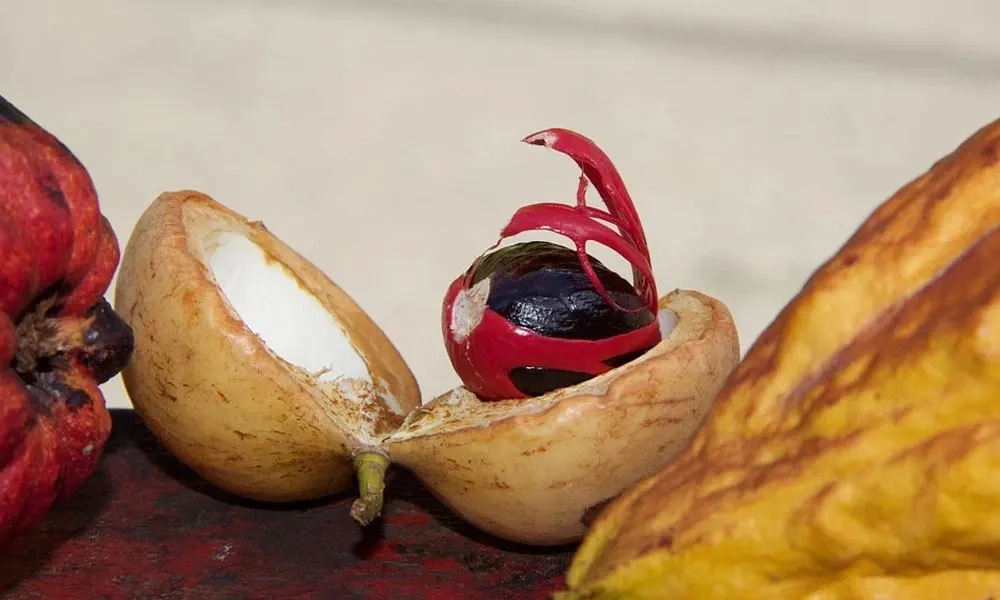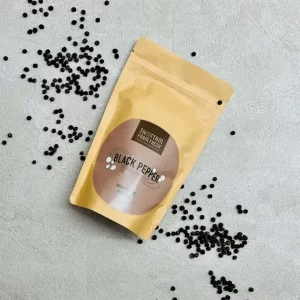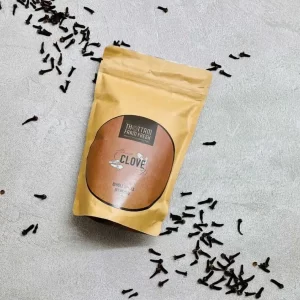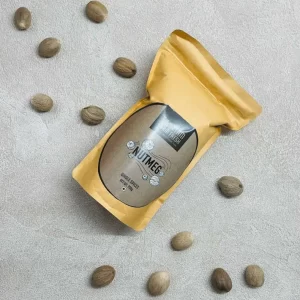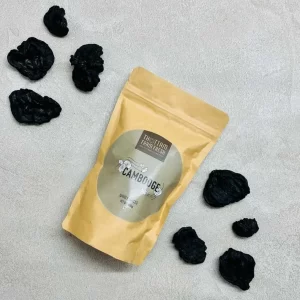Spices play a crucial part in all Indian cultures. They are not only used for flavour or seasoning of foods but also hold various medicinal values. India is a supplier of a wide variety of spices globally. The demand for Indian spices is magnific in the global market due to their rich aroma and taste.
The major export of spices from Kerala is through Cochin and Trivandrum Ports. Additionally, major importers of Indian spices are the USA and the UAE, followed by the European Union, Malaysia, China, Singapore, Sri Lanka, and Japan.
The Indian spices online sites registered that more than 0.40 million tons of spices annually are exported. It accounts for around 48% of the global export volume and 44% of the export value. For 2020-21, spices production in the country grew from 67.64 lakh tonnes in 2014-15 to 106.79 lakh tonnes with an annual growth rate of 7.9%. Following an increase in area from 32.24 lakh hectares to 45.28 lakh hectares
India boasts of being the monopoly distributor of spices available on both organic Kerala spices online sites and supermarkets in the world and the country. The major export items include:
- Pepper
- Cardamom
- Ginger
- Turmeric
- Curry powder
- Cinnamon
- Vanilla
- Chilly
- Cumin
- Coriander
- Fenugreek
- Nutmeg
- Mace.
India is the second largest producer and exporter of nutmeg. It offers a relishing flavour and medicinal properties for the body. However, many confuse nutmeg with nutmeg mace. Each has its benefits to offer and we must know their difference too. Let us further understand what they are and how they are different.
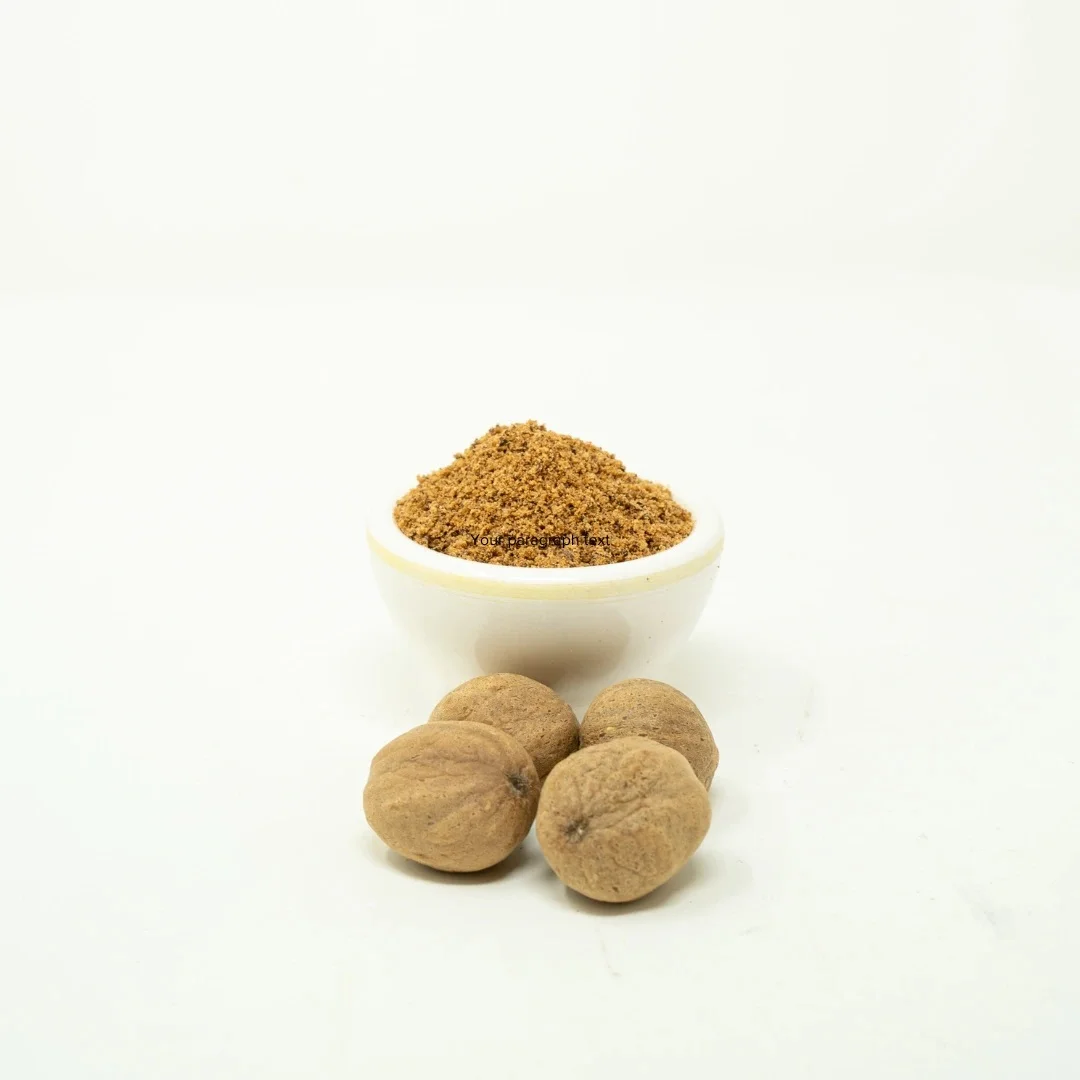
What Is Nutmeg?
Nutmeg is a spice made from the seed of a tree named Myristica fragrant. It is a classic autumn spice, frequently found in fall desserts and beverages. It has an interesting history that dates back to the 1st century A.D. It was a special spice and was considered a high currency for trade. The Dutch, captured the Banda Islands, which ended in a massacre to monopolize the nutmeg trade. This swayed way for the establishment of the Dutch East India Company, a combination of several Dutch trading companies.
Nutmeg for seasoning is created by drying the seeds gradually in the sun for six to eight weeks. During this, it shrinks away from the hard seed coat. It is ready when the kernels rattle in their shells when shaken. It can be bought as whole nutmeg seed or ground in a container. However, grating the seed directly into a recipe imparts a fresher and cleaner taste than store-bought ground nutmeg.
What is Mace?
The Myristica fragrans evergreen tree is native to the Moluccas Islands in Indonesia. It produces both nutmeg and mace. Mace is the red lacy coating that encases the nutmeg seed. It is a yellowish-brown spice derived from the dried lacy coating of the seed.
The colour of the spice often helps to determine its origin. While the orangish-red blades tend to be from Indonesia, the orangish-yellow blades most likely come from Grenada. It is available in ground form as well as (dried) blades. These blades are called Javitri in the Indian Subcontinent.
Mace has a flavour that is sweet, woody, and warm with a mild pungent kick. It is very much like nutmeg but softer and not quite as sweet. The taste of mace can be described as a fusion of cinnamon and pepper. It is paired with other aromatic spices. And is prominently used in – Asian, Caribbean, Indian, and Moroccan cuisines. Besides that, it can also be used in British, Dutch, and French cooking. It is found in spice blends and baked goods. It is also good to be used in savoury dishes like soups, sauces, and various other recipes.
Difference between Nutmeg and Mace
Although nutmeg and mace come from the same tree, they differ from each other in many ways. Mace forms the outer coating of the nutmeg seed. It is removed first and ground into a red-colored spice, while the nutmeg seed can either be kept whole or ground up.
- Nutmeg is oval-shaped, whereas mace is the red webbing that surrounds the shell.
- They are not used together but can be a substitute for each other.
- Both spices have a long and intriguing history, travelling from Indonesia to England.
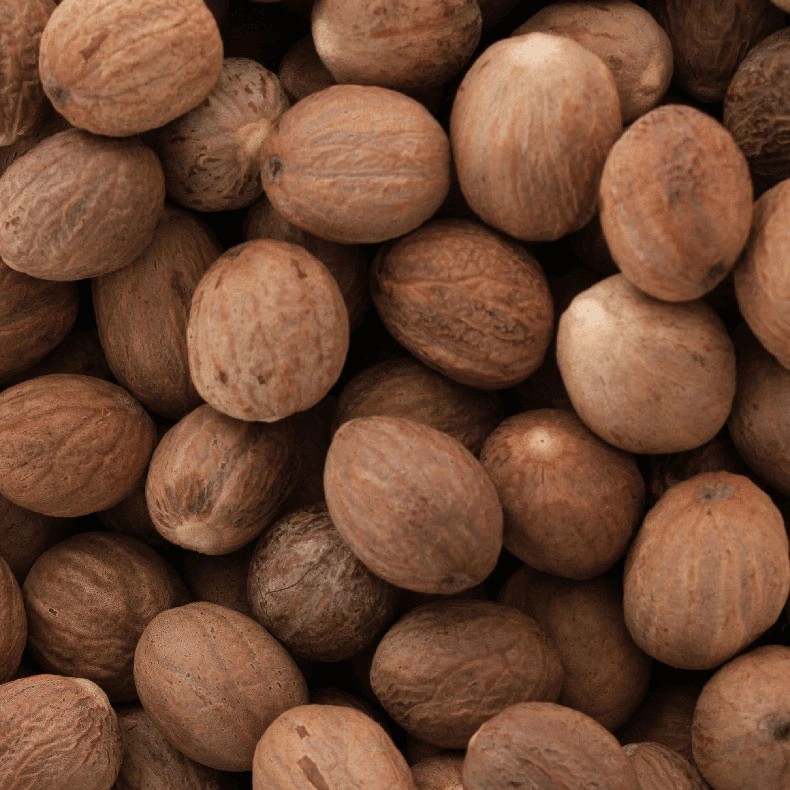
- Both have a nutty, warm, and slightly sweet flavour. However, nutmeg has a milder taste (as compared to mace) and is sweeter and more delicate. Hence it is used to add sweet and savoury flavour to dishes. Mace, on the other hand, is a little spicier and more intense and can be described as a combination of pepper and cinnamon. Even though the spices grow as one, they are rarely used together in a recipe.
- Nutmegs after grating are available in seed form. On the other hand, mace is prepared from the outer covering of the seed and is available as a red powder.
Export of Nutmeg & Mace [Together] :
| Year of export | Quantity in Tonnes |
| 2011-12 – 3620 | 3620 |
| 2012-13 – 3231 | 3231 |
| 2013-14 – 4450 | 4450 |
| 2014-15 – 4475 | 4475 |
| 2015-16 – 4050 | 4050 |
In the battle of mace vs nutmeg, it is found that nutmeg is more popular than mace and, hence used more often. Mace has a potent flavour and aroma but also loses the aroma quickly. It is why fresh mace is recommended instead of the one which has been there for months.
When comparing both spices, based on price nutmeg is the more affordable one. It is a whole spice and both have a very similar aroma. However, mace has an extra hint of black pepper without being spicy.
Thus, it can be said that mace is more expensive and is available as dried blades and ground. On the other hand, nutmeg is cheaper and available as whole seeds in supermarkets or on Indian spices online on websites.
Use of nutmeg in cooking:
Nutmeg has a long culinary record and can be part of sweet and savoury dishes. It can be used as a whole seed and grated directly in the dish or measured or shaken from a can/tin of pre-grounded nutmeg. To use the whole nutmeg one needs to peel away a small portion of the seed.
It is a popular ingredient in different spice blends, such as pumpkin pie spice and garam masala. It is also sprinkled in hot beverages like cappuccino for added flavour and garnish. One of the most common uses for nutmeg is in desserts, especially apple pie or pumpkin pie. It is particularly well suited for creamy or cheesy dishes and is frequently added to alfredo or bechamel sauce(commonly used in French Cuisine) to create depth.
Recipe for: Classic Custard Pie with Nutmeg
Ingredients :
- Eggs – 6
- White sugar – 1 cup
- Vanilla extract – 1 teaspoon
- Salt – as per taste
- Nutmeg powder – ½ teaspoon
- Milk – 2 cups
- Unbaked pie crust – 1 (9 inches)
Directions / steps :-
- Preheat the microwave oven to 475 degrees F (= 245 degrees C.)
- Add eggs, sugar, vanilla, salt, and nutmeg to a large bowl. Beat them together. Stir in milk. Pour into crust.
Bake the mix in the preheated oven for 10 minutes.
- Reduce the temperature to 350 degrees F (175 degrees C) and bake for 25 to 35 minutes or until the crust is golden brown and the filling is appropriate.
Use of mace in cooking
The majority of recipes call for ground mace. It requires no preparation and can be used right out of the jar. The blades are easy to grind, either with a grinder or a mortar and pestle. Gently roasting the blades and letting them cool off before grinding wakes the essential oils for a more fragrant spice and helps prevent oils from clogging a spice grinder. Nutmeg Mace blades should be toasted in a dry pan until they are crispy and fragrant.
Mace is a component of several spice mixtures, including
- curry powder
- and garam masala.
It is also flavorful in baked goods like:
- doughnuts
- cakes
- puddings
- custards.
The spice can also be a part of the tea, cheese dishes, and other Indian recipes. It specifically complements dishes made with cherries or chocolate. Also, the blades can infuse flavour into rice, steamed dishes, stocks, or familiar liquid-based recipes with long cooking times.
Recipe for Spiced Tea:
Ingredients :
- ground ginger – 1 ½ teaspoon
- ground cardamom – 1 teaspoon
- ground cinnamon – ½ teaspoon
- ground nutmeg – ½ teaspoon
- ground cloves – ¼ teaspoon
- mace – ¼ teaspoon
Directions / steps :-
- Combine all the ingredients.
- For a more intense flavour and aroma, put the spices into a small pan, preferably non-stick, over low heat and dry-fry them very briefly, stirring or lightly tossing frequently so that they do not burn.
- Store in a small airtight container. If the ingredients are dry-fried, you should ensure they are at room temperature before transferring them to the storage container.
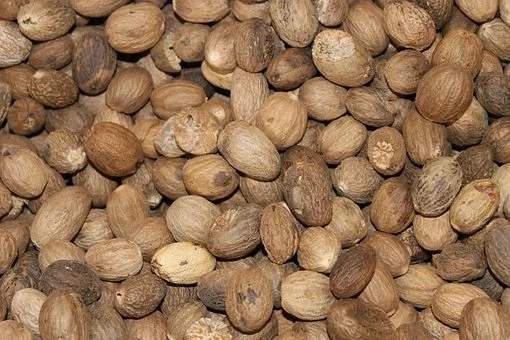
The health benefits that nutmeg and mace have to offer:
Every Indian spice has more than one benefit to offer. Before you purchase and begin using nutmeg or mace, it is vital to know their benefits. Some of the significant advantages of using nutmeg and mace include:
Pain relief: Nutmeg plays a crucial role in reducing the levels of inflammation in the human body. It is significantly valuable for treating joint conditions, acute joint pain, and other painful conditions. Thus, nutmeg is a critical ingredient in manufacturing medicines that helps reduce body pain.
Improves mood: Nutmeg contains several compounds that can help in improving mood. It contains serotonin and dopamine. Many studies also indicate that using nutmeg can reduce neurological diseases like Alzheimer’s and dementia.
Reduce sleeplessness or insomnia: Many spices are known to be useful for relaxation. Nutmeg and mace are two paramount spices that help in relaxation. Consuming a pinch of nutmeg with a cup of tea or warm milk can give a good night’s sleep.
In a study conducted to understand the insomnia-fighting property of nutmeg and mace, it has been observed that they contain compounds and supplements that can help to change sleeping patterns. A 4- week’s use of these spices can be advantageous in the enhancement of sleep as well as mood patterns.
Antibacterial property: The compound responsible for mood-lifting and neuroprotective effects also comes up with antibacterial effects. It can help in killing the bacteria present in the mouth. In the long term, it can also help relieve dental pain.
Healthy digestive system: Mace also comes up with lots of benefits. One of the necessary benefits is keeping our digestive system fit. Therefore, with the regular consumption of mace, one can eliminate bloating, constipation, and other gas-related problems. In addition to this, it is adept for the proper regulation of bowel movements.
Protects kidney – Another fundamental benefit of nutmeg and mace is their ability to protect kidney health. These spices can also help dissolve stones in the kidney as an effective natural remedy for the treatment of kidney infections and other conditions related to the kidney.
Furthermore, the consumption of mace can be an excellent option for issues like nausea, diarrhea, and flatulence.
Conclusion
Spices are not only about taste. Nutmeg and nutmeg mace are two very different spices. Nutmeg is the seed of the tree, while nutmeg mace is the lacy red covering that surrounds the seed. They have different flavours, with nutmeg being sweeter and mace being more peppery. They are used in different dishes and for different purposes. They are both derived from the same tree and have many of the same uses. The main difference between the two is that nutmeg mace has a slightly more bitter flavour than nutmeg.
They are known for their fragrances and aroma. You can add it to enhance the flavour, look, and colour of otherwise boring food. In addition to this, these two spices also contain a good proportion of antioxidants, vitamins, minerals, and other essential compounds.
Hence, to add deliciousness to your everyday food, you must buy spices like nutmeg and mace from the Kerala Spices online platforms like Thotham Farm Fresh. We offer pesticide-free, natural spices that are tasty and healthy. They also deliver the spice to your doorstep.

